Boat Capacity Plate Rules and Calculation
According to United States Coast Guard statistics, the leading cause of boating-related deaths is capsizing. How can you minimize this risk? By understanding the information on your Boat Capacity Plate and following the recommendations for number of people, gross load and horsepower for your boat.
Remember, boating regulations are there to keep you safe. It’s not only illegal to drive a boat with more than the maximum number of people or maximum weight on board, it’s also very dangerous.
What is a boat capacity plate?
According to Federal Law, all powerboats less than 20 feet long need to have a boat capacity plate. It is a small, metal sign that should be permanently fastened near the helm.
Each capacity plate shows the acceptable legal load for that specific size and type of boat:
- Maximum passenger weight in lbs. and the estimated equivalent number of adult passengers
- Maximum gross load, including gear, engine, and passengers
- Maximum recommended boat engine size (horsepower)
Keep in mind that the recommendations on the capacity place apply to boating in good weather. If you are just learning how to drive a boat, be sure that you only take to the water in optimal conditions.
Maximum number of passengers
The individual weight of each person on board can vary. Boat manufacturers calculate the maximum number of passengers on a boat using an average weight of between 150lbs and 185lbs per person.
You will have to rely on your common sense and adjust the number of people on board according to their individual size. In addition, if you have a lot of heavy equipment in your boat, you may have to further reduce the number of passengers to boat safely.
The maximum person number on a boat capacity plate is a guideline, and it is your responsibility to calculate the weight of your passengers and equipment correctly. Always keep the water below the waterline! And don’t hesitate to take a boater safety course or learn more about the parts of a boat to make sure you’re doing things right.
Maximum Gross Load
Even if you are the only person on your boat, you can still overload it by filling it with too many supplies. In other words, it’s not just the number of people in your boat that could make it capsize, it’s also the overall weight of everything in the boat.
To avoid swamping or capsizing even if you are under the recommended load, be sure to distribute the contents of your boat evenly, placing most of the weight in the middle of the boat.
Again, recommendations on a boat capacity plate only apply to good weather conditions. If you are boating in bad weather, you have to be extra careful, since a boat is harder to control in higher waves.
Maximum engine power or horsepower
Boat capacity plates will also indicate the recommended horsepower for your size and type of boat.
Using an engine that is too large for your boat can lead to the stern sitting too low, increasing the risk of the boat being swamped by its own wake or the wake of passing boats. It also makes the boat more difficult to control.
The danger of overloading or overpowering your boat cannot be overstated.
Boat capacity calculation
If your boat does not have a boat capacity plate, you can still make some calculations on your own and avoid capsizing:
Safe engine size
Some small, flat-bottomed boats do not have a boat capacity plate. But don’t worry, you can still calculate the maximum horsepower for a small boat.
You just need to calculate your boat’s square footage as follows:
Boat length x width of transom = boat square footage
And refer to the chart below.
Safe number of people on board
You can also calculate the number of people you can safely take on board without a boat capacity plate.
Number of people = (boat length (ft.) × boat width (ft.)) ÷ 15
Remember, this equation is appropriate for mono-hulled boats that are less than 20 feet long, being operated in good weather conditions.
PWCs
Personal watercraft are different from boats. Even though they may measure less than 20 feet, the rules for the number of passengers and total load are different, and you cannot use the above calculations to determine safe capacity. Please refer to the manufacturer’s manual or individual state laws.
Learn all about boating safety with Drive a Boat USA
It is your legal responsibility to operate your boat according to the information provided on the boat capacity plate. Remember that your safety and the safety of your passengers depends on it!
Even without a boat capacity plate, you can still calculate appropriate load and horsepower limits for your boat.
Drive A Boat USA can teach you everything you need to know about boating safety. Contact us today to earn your official state-approved boating license and begin a new boating adventure!



